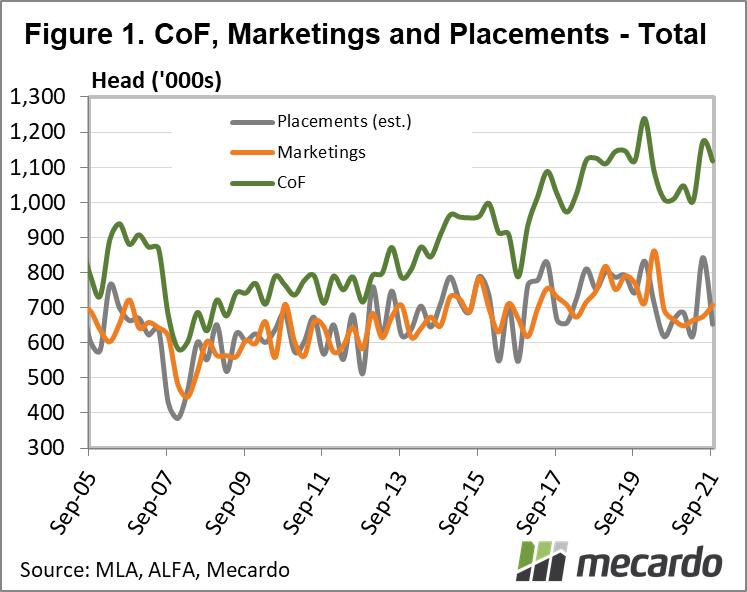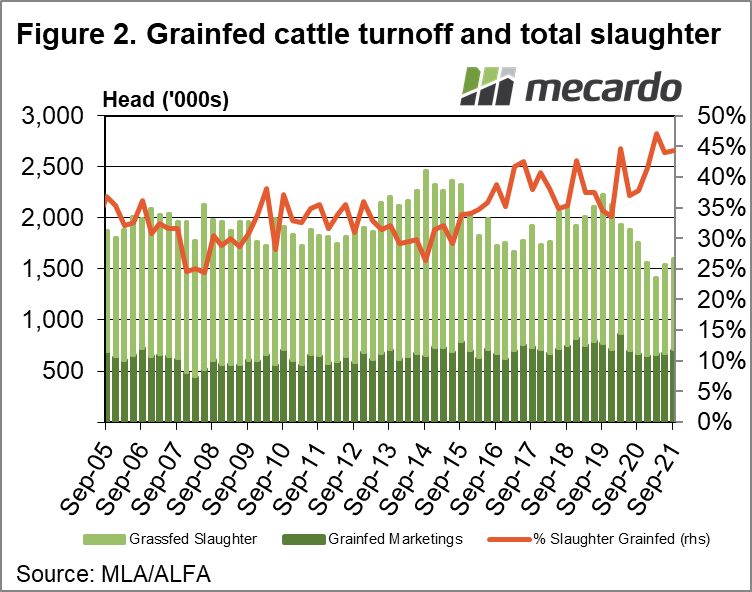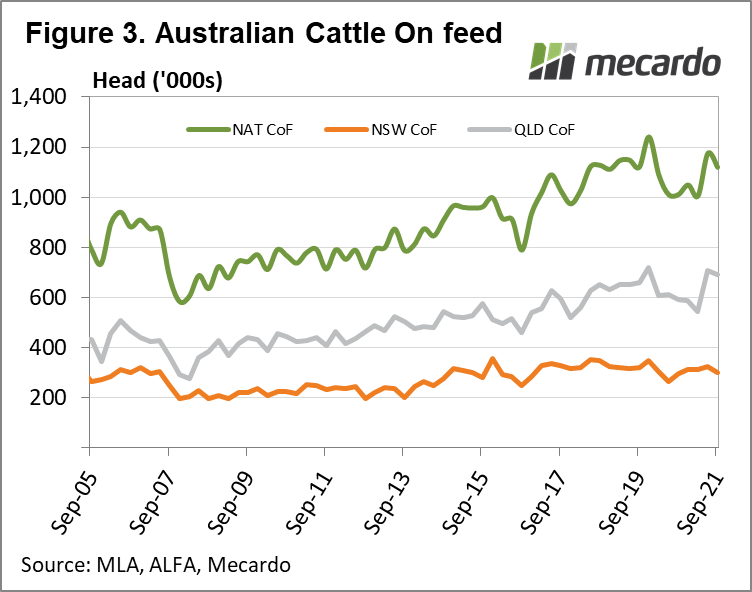Record feeder prices haven’t put too much of a dent in cattle on feed numbers for the September quarter, with the figure remaining above 1 million. Despite a 4.6% decline on the June quarter, lotfed cattle volumes were 10.4% above the five-year average for the September period, and 10.8% higher than the same quarter the previous year. That’s an increase of nearly 109,000 cattle year-on-year. Grainfed cattle turnoff actually lifted, and their percentage of total cattle slaughter remained firm on the previous quarter, all of which indicate lotfeeding importance - and resilience - into the future.
Placements of cattle on feed did see a more significant drop off from the previous quarter, down 22.5%, but were only 2% lower year-on-year, and 3% below the five-year average for the September quarter. Marketings, however, were up 6.2% on the 2020 September quarter, having climbed 4.9% since the previous three months. The differential in the two evened out the national utilisation rate, which remained the same at 77% – 7% higher year-on-year. No state had an increase of cattle of feed for the September quarter, with Queensland losing 2.6%, NSW back 6.9% and Victoria down 5.7%, but Queensland was up 17% year-on-year, and Victoria 31%.
At the end of September, lotfeeders were paying a record 643ȼ/kg liveweight for cattle averaging 250kg, but feeders were still making up an above long-term average percentage of the young cattle buy. The national feeder steer indicator (330-400kg) averaged 523ȼ/kg lwt for the quarter, or 984ȼ/kg carcass weight (to make the comparison easier with OTH returns), which was not only a record high, but was 12% above the previous quarter’s average (which was also a record), and 25% stronger year-on-year. So far for the December quarter (to November 30), it’s averaging 564ȼ/kg.
At the other end, Queensland’s 100-day grainfed over the hooks indicator also reached a record for the September quarter, averaging 693ȼ/kg cwt, up nearly 30ȼ/kg on the previous quarter and 7% on year-on-year. And if we look at demand through the lens of export volumes, grainfed beef volumes sent offshore were up 28% year-on-year for the month of September, whereas total Australian beef exports only climbed 10% for the month.
What does it mean?
Lotfeeders have shown resilience throughout the year as young cattle prices have climbed higher and higher and may finally be feeling some relief on their bottom line as finished cattle prices improve. Processor and export demand remains strong, and one would think feed grain prices should soon experience some downward pressure as well. With plenty of space left at the feed bunker, feedlots look set to play a significant role in the upcoming southern weaner turnoff.
Have any questions or comments?
Key Points
- Cattle on feed numbers dipped slightly in the September quarter, but remained 10% above the five-year average.
- Grainfed cattle turnoff lifted to its highest level since the March 2020 quarter, remaining at a steady 44% of total cattle slaughter for June-September.
- Feeder and grainfed over the hook indicator prices reach new highs as supply still tight.
Click on figure to expand
Click on figure to expand
Click on figure to expand
Data sources: MLA, ABS, ALFA, Mecardo















